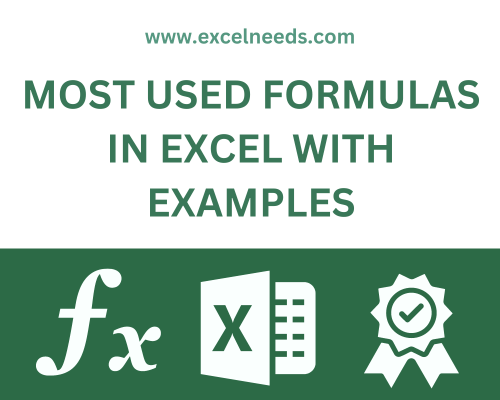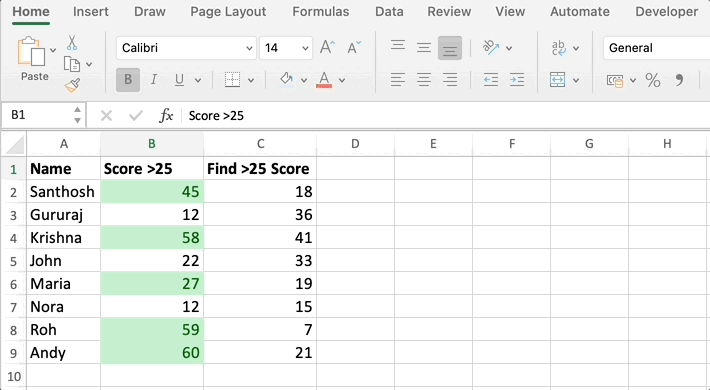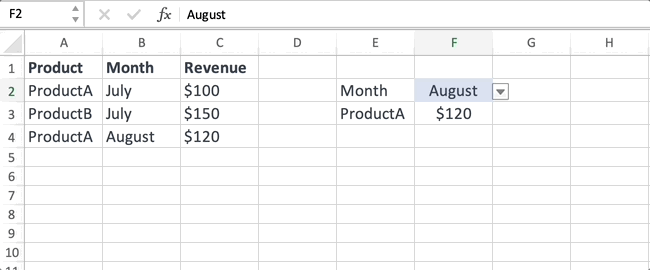Most Used Formulas in Excel with Examples

Microsoft Excel is a widely used spreadsheet software that enables users to organize, manipulate, and analyze data with ease. Excel provides a wide range of functions and formulas that allow users to perform complex calculations, automate tasks, and create interactive visualizations.
In this blog, we will discuss the most commonly used formulas in Excel with examples that can help improve your productivity and efficiency while using Excel.
SUM Formula
The SUM formula is one of the most basic and commonly used formulas in Excel. It is used to add up the values in a range of cells. The syntax for the SUM formula is as follows
=SUM(Cell1:Cell2)
For example, if you want to add up the values in cells A1 through A5, the formula would be:
=SUM(A1:A5)
AVERAGE Formula
The AVERAGE formula is used to find the average of a range of cells. It is a useful formula for calculating the mean of a dataset. The syntax for the AVERAGE formula is as follows:
=AVERAGE(Cell1:Cell2)
For example, if you want to find the average of the values in cells A1 through A5, the formula would be:
=AVERAGE(A1:A5)
MAX Formula
The MAX formula is used to find the highest value in a range of cells. It is a useful formula for finding the maximum value in a dataset. The syntax for the MAX formula is as follows:
=MAX(Cell1:Cell2)
For example, if you want to find the highest value in cells A1 through A5, the formula would be:
=MAX(A1:A5)
MIN Formula
The MIN formula is used to find the lowest value in a range of cells. It is a useful formula for finding the minimum value in a dataset. The syntax for the MIN formula is as follows:
=MIN(Cell1:Cell2)
For example, if you want to find the lowest value in cells A1 through A5, the formula would be:
=MIN(A1:A5)
COUNT Formula
The COUNT formula is used to count the number of cells in a range that contain numeric values. It is a useful formula for finding the number of values in a dataset. The syntax for the COUNT formula is as follows:
=COUNT(Cell1:Cell2)
For example, if you want to count the number of cells in cells A1 through A5 that contain numeric values, the formula would be:
=COUNT(A1:A5)
IF Formula
The IF formula is used to perform a logical test and return one value if the test is true and another value if the test is false. It is a useful formula for performing conditional calculations. The syntax for the IF formula is as follows:
=IF(Logical_test, Value_if_true, Value_if_false)
For example, if you want to test if the value in cell A1 is greater than the value in cell A2 and return "Yes" if true and "No" if false, the formula would be:
=IF(A1>A2,"Yes","No")
VLOOKUP Formula
The VLOOKUP formula is used to look up a value in a table and return a corresponding value in the same row. It is a useful formula for finding information in a large dataset. The syntax for the VLOOKUP formula is as follows:
=VLOOKUP(Lookup_value, Table_array, Column_index_number, [Range_lookup])
For example, if you want to look up the phone number for a person with the last name "Ramesh" in a table with last names in column A and phone numbers in column B, the formula would be:
=VLOOKUP("Ramesh",A1:B5,2,FALSE)
Related Blogs

How Excel Can Improve Your Productivity at Work
In today’s fast-paced business world, productivity is more important than ever. We are all looking for ways to streamline our work and get more done in less time. One tool that can help us achieve this is Microsoft Excel.
Read More ..
Conditional Formatting in Excel (With Examples)
Conditional formatting is a powerful feature in Microsoft Excel that allows you to visually enhance your data by applying different formatting styles based on specified conditions.
Read More ..
INDEX MATCH Function with Examples
In the realm of Excel, the INDEX MATCH function stands as a powerful tool that unlocks the potential to manipulate and extract data efficiently.
Read More ..
How to Create a Dashboards in Excel?
In today's data-driven world, Excel dashboards have become indispensable tools for professionals across various industries.
Read More ..